Myths about teaching can hold you back
- Year 5
Explain that decimal numbers with hundredths can be partitioned in different ways
I can explain that decimal numbers with hundredths can be partitioned in different ways.
- Year 5
Explain that decimal numbers with hundredths can be partitioned in different ways
I can explain that decimal numbers with hundredths can be partitioned in different ways.
These resources will be removed by end of Summer Term 2025.
Switch to our new teaching resources now - designed by teachers and leading subject experts, and tested in classrooms.
These resources were created for remote use during the pandemic and are not designed for classroom teaching.
Lesson details
Key learning points
- Place value resources can help you to partition decimal numbers with hundredths in different ways.
- Decimal numbers with hundredths can be partitioned into a whole number, a number of tenths and a number of hundredths.
- Part-part-whole models can be used to partition decimal numbers with hundredths into two parts in different ways.
- Decimal numbers with hundredths can be written as multiplication equations with a factor of 0.01
Keywords
Partitioning - The act of splitting an object or value down into smaller parts.
Decimal numbers - A number with a decimal point followed by digits that show the fractional part.
Common misconception
Pupils write subtraction equations incorrectly for example: 7.42 = 7 − 0.4 − 0.02
Create the number using place value counters and subtract parts whilst drawing a part-whole model and writing the equation alongside.
To help you plan your year 5 maths lesson on: Explain that decimal numbers with hundredths can be partitioned in different ways, download all teaching resources for free and adapt to suit your pupils' needs...
To help you plan your year 5 maths lesson on: Explain that decimal numbers with hundredths can be partitioned in different ways, download all teaching resources for free and adapt to suit your pupils' needs.
The starter quiz will activate and check your pupils' prior knowledge, with versions available both with and without answers in PDF format.
We use learning cycles to break down learning into key concepts or ideas linked to the learning outcome. Each learning cycle features explanations with checks for understanding and practice tasks with feedback. All of this is found in our slide decks, ready for you to download and edit. The practice tasks are also available as printable worksheets and some lessons have additional materials with extra material you might need for teaching the lesson.
The assessment exit quiz will test your pupils' understanding of the key learning points.
Our video is a tool for planning, showing how other teachers might teach the lesson, offering helpful tips, modelled explanations and inspiration for your own delivery in the classroom. Plus, you can set it as homework or revision for pupils and keep their learning on track by sharing an online pupil version of this lesson.
Explore more key stage 2 maths lessons from the Understand hundredths as parts of a whole and represent unit, dive into the full primary maths curriculum, or learn more about lesson planning.

Licence
Prior knowledge starter quiz
6 Questions
Q1.Breaking an object of value down into smaller parts is known as:
Q2.Tick the correct number for the missing part.
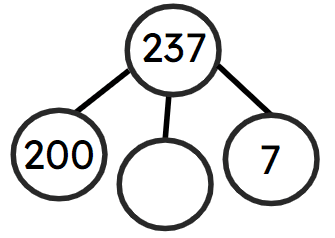
Q3.Write in the missing number for this part-part-whole model.
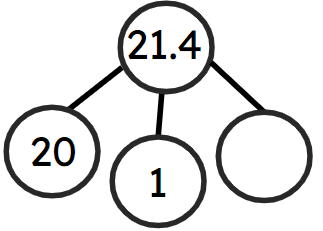
Q4.Tick the expression that would represent this image.
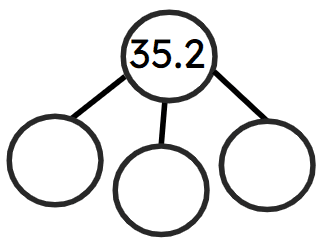
Q5.Tick the decimal number that has been partitioned.
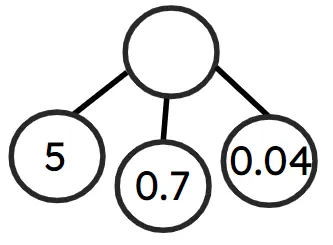
Q6.6.42 has been partitioned into three parts. Tick the options that the two remaining parts could be.
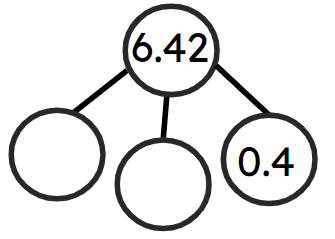
Assessment exit quiz
6 Questions
Q1.Write in the missing number from the part-part-whole model.
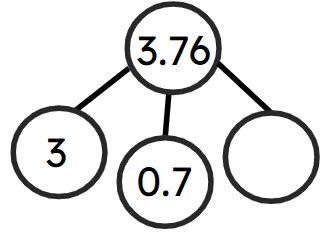
Q2.Tick the equations that could be written based on this part-part-whole model.
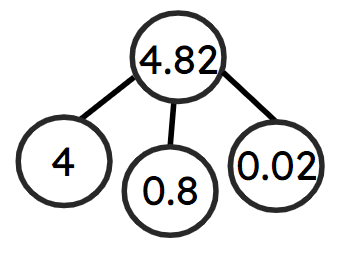
Q3.Match the correct expression to each sum.
3.25
3.26
3.35


